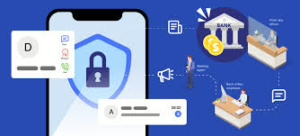- At least 179 cases of e-commerce scams on Shopee were reported in Singapore in 2024
- Total losses amounted to at least $399,000
- Scammers would list products or host live streams on Shopee to attract victims.
- After orders were placed, scammers would direct victims to complete transactions outside the Shopee app.
- They would offer discounts as incentives to move conversations to messaging platforms like Telegram and WhatsApp.
- Some scammers created fake buyer personas in group chats to create the illusion of legitimacy.
- Victims would make payments via PayNow or bank transfers
- Some victims were told their products were held at Customs and needed to pay additional fees
- Shopee advises users to only buy from trusted sellers and keep all transactions within the app
- Shopee Guarantee holds payments in escrow until buyers confirm receipt, protecting legitimate transactions
This type of scam follows a typical pattern seen across many e-commerce platforms: luring customers away from the platform’s protected payment system with promises of discounts or special deals. It reminds us why platform payment protections exist and the risks of circumventing them.
Analysis of E-Commerce Scams and Singapore’s Anti-Scam Measures
Common E-Commerce Scam Patterns
The Shopee scam described in the article follows several classic scammer tactics:
- Platform Bypass: Persuading victims to leave the protected platform environment
- Discount Luring: Offering financial incentives to encourage risky behavior
- False Social Proof: Creating fake buyer personas to establish legitimacy
- Payment Method Manipulation: Directing victims to use irreversible payment methods
- Customs/Shipping Fraud: Creating fake obstacles requiring additional payments
- Disappearing Act: Becoming uncontactable after payment is received
These tactics exploit human psychology, including the desire for deals, trust in social validation, and unfamiliarity with platform safety mechanisms.
Singapore’s Anti-Scam Ecosystem
Singapore has developed a comprehensive approach to combat scams:
Government Initiatives
- ScamShield: An app and helpline (1799) that blocks scam calls/messages and provides support
- Scam Alert Website: Provides updated information about current scam types
- Anti-Scam Centre: Established by the Singapore Police Force in 2019 to coordinate scam-fighting efforts
- Project OASIS: Online platforms automatically share information on suspected scam accounts
- E-commerce Marketplace Safety Badge: Recognizes platforms with robust anti-scam measures
Financial Safeguards
- Money Mule Interception System: Helps detect suspicious money transfers
- Delay in Fund Transfers: Implemented a “cooling period” for certain digital banking transactions
- SMS Registry: To verify authentic bank messages versus scam attempts
- Transaction Limits: Default limits on digital transfers to reduce potential losses
Public Education
- National Crime Prevention Council Campaigns: “Spot the Signs, Stop the Crimes”
- Community Vigilance Programs: Neighborhood watch initiatives focused on scam awareness
- School Education Programs: Teaching digital literacy and scam awareness
- Senior-Targeted Programs: Special initiatives for traditionally vulnerable populations
Platform-Specific Protections
Platforms like Shopee have implemented various safety mechanisms:
- Escrow Systems: Like Shopee Guarantee, holding funds until delivery is confirmed
- Seller Verification: Processes to validate legitimate sellers
- In-App Communication: Encouraging all communications to remain within the platform
- Detection Systems: AI tools to identify suspicious listings or behavior
- Report Functions: Easy ways for users to flag suspicious activity
Effectiveness and Challenges
Despite these measures, scams continue to evolve and persist for several reasons:
- Cross-Border Nature: Many scammers operate from outside Singapore’s jurisdiction
- Technology Adaptation: Scammers quickly adjust to new security measures
- Human Psychology: The effectiveness of social engineering techniques
- Digital Literacy Gaps: Varying levels of awareness across different demographics
Recommendations for Consumers
- Platform Integrity: Never leave the platform’s protected environment for transactions
- Payment Protection: Use reversible payment methods when possible
- Too Good To Be True: Be skeptical of huge discounts
- Verification: Research sellers through reviews and ratings
- Report promptly: Alert platforms and authorities immediately if scammed
Singapore’s multifaceted approach, combining technology, regulation, financial sector coordination, and public education, represents one of the more comprehensive anti-scam frameworks globally. However, the ongoing challenge requires continuous adaptation as scam techniques evolve.
Singapore’s Anti-Scam Ecosystem: A Comprehensive Analysis
Singapore’s Unique Scam Landscape
Singapore faces distinctive challenges in combating scams due to several factors:
- High Digital Adoption: With 97% smartphone penetration and 98% internet usage, Singapore’s highly connected population creates a large potential target base
- Wealthy Population: Singapore’s high per capita GDP makes its citizens attractive targets with higher potential payouts
- Aging Demographics: An increasing elderly population that may have less digital literacy while having significant savings
- Financial Hub Status: Its position as a financial center creates opportunities for sophisticated financial scams
- Cross-Border Proximity: Geographic and digital proximity to regions with varying regulatory oversight
Singapore’s Integrated Anti-Scam Framework
Singapore has developed one of the world’s most coordinated anti-scam approaches:
Government-Led Initiatives
- Inter-Ministry Committee on Scams: Coordinates whole-of-government responses
- Anti-Scam Centre (ASC): Established in 2019, it has recovered over S$200 million through swift intervention
- ScamShield App: Government-developed app that blocks scam calls/SMSs using AI detection
- National Crime Prevention Council (NCPC): Runs targeted awareness campaigns
- Legislation: The Online Criminal Harms Act (2023) provides powers to block scam websites and freeze accounts
Financial Sector Safeguards
- FAST Payment Delays: Implementation of a cooling period for first-time fund transfers
- Project PACT: Partnership between MAS and banks for fraud detection and recovery
- “Kill Switch”: An Emergency feature enabling immediate account freezing in suspected fraud cases.
- ScamBuster Program: Uses AI to detect unusual transaction patterns
- Transaction Limits: Default S$5,000 daily limit on most digital transfers
Telecom Protections
- +65 Prefix Display: Mandatory display for all overseas calls to identify potential scam sources
- SMS Sender ID Registry: Authentication system for legitimate business messages
- Scam Call Blocking: Network-level filtering of known scam numbers
- Anti-Spoofing Technology: Prevents caller ID manipulation
Public-Private Partnerships
- Project OASIS: Information sharing between banks, telcos, and platforms to detect scam patterns
- E-commerce Marketplace Alliance: Collaboration between major platforms on anti-scam standards
- Singapore Police Force-NCPC Partnership: Joint anti-scam education campaigns
- OCBC-Singapore Police Force Direct Hotline: Bank-police direct channel for rapid response
Community Engagement Strategies
- Multigenerational Approach: Different campaigns targeting various age groups
- “Spot the Signs”: National campaign using memorable scenarios to educate public.
- Community Vigilance Networks: Neighborhood-level scam alert systems
- Jaga Connect Initiative: Community-led support for scam victims
- Senior Digital Ambassadors: Peer-to-peer education for elderly citizens
Effectiveness Analysis
While scam numbers remain significant, Singapore’s approach has shown promising results:
- Recovery Rate Improvements: Increased success in recovering scammed funds (from 16% in 2020 to 29% in 2023)
- Reduction in Specific Scam Types: Significant drops in previously dominant scams like police impersonation scams
- Reduced Time-to-Response: Average intervention time reduced from days to hours
- Increased Reporting: Higher public willingness to report scam attempts
Ongoing Challenges
- Scam Evolution: Rapid adaptation of tactics by scammers
- Cross-Border Jurisdiction: Difficulty prosecuting overseas scammers
- Technological Arms Race: Keeping pace with AI and deepfake technologies
- Balancing Convenience and Security: Maintaining user experience while adding protections
- Education Reach: Ensuring awareness reaches all demographic segments
Future Directions
- AI Detection Enhancement: Expanding machine learning capabilities in scam prevention
- International Coordination: Strengthening cross-border enforcement mechanisms
- Digital Identity Verification: Expanded national digital ID usage for transaction security
- Behavioral Economics Application: Using nudge theory to encourage safer online behavior
- Real-Time Transaction Monitoring: Further development of instant fraud detection systems
Singapore’s comprehensive approach offers valuable lessons for other nations. It demonstrates the effectiveness of coordinated government action, public-private partnerships, and community engagement in combating the growing global challenge of online scams.
Analysis of Scams and Anti-Scam Centre Measures in Singapore
Common Scam Types in Singapore
- Government Official Impersonation Scams
- Impersonating police, MAS, or other officials
- Claims of money laundering investigations
- Requests for fund transfers to “safe accounts”
- $151.3 million lost in 2024 (1,504 cases)
- Banking-Related Scams
- Fake bank staff claiming suspicious transactions
- Phishing links to steal banking credentials
- Often escalate to government impersonation
- Job Scams
- Promises of high pay for minimal work
- Recruitment via messaging platforms
- Initial small payments to build trust before larger scams
- Investment Scams
- Fake investment platforms with manipulated returns
- “Pump and dump” schemes for cryptocurrencies
- Impersonation of legitimate financial institutions
- E-Commerce Scams
- Fake listings on legitimate platforms
- Non-delivery after payment
- Counterfeit goods
- Social Media Impersonation
- Clone accounts of friends/family
- Requests for urgent financial help
- Relationship/romance scams
Singapore’s Anti-Scam Centre (ASC) Measures
- Rapid Response Framework
- 24/7 hotline (1800-722-6688)
- Partnerships with banks for rapid fund freezing
- Ability to freeze accounts within hours of reports
- ScamShield Application
- Filters scam calls and messages
- Blocks known scam numbers
- Reports new scam numbers to central database
- Project FRONTIER
- Cross-border collaboration with international police
- Targets international scam syndicates
- Joint operations to disrupt scam infrastructure
- Bank Account Tracing
- Sophisticated monitoring of money flow
- Quick identification of money mule accounts
- Freezing and recovery of scammed funds
- Public Education Initiatives
- Targeted awareness campaigns
- Scam alert messaging systems
- Community engagement programs
- Industry Partnerships
- Collaboration with telecommunications companies
- Working with financial institutions
- Joint prevention protocols with e-commerce platforms
- Legal and Enforcement Actions
- Prosecution of scammers and money mules
- Disruption of communication channels
- Seizure of criminal proceeds
Effectiveness and Challenges
The ASC has recovered significant funds since its establishment in 2019, but challenges remain:
- Increasingly sophisticated scam techniques
- The cross-border nature of many scam operations
- Legal jurisdictional limitations
- Technology evolution outpacing prevention measures
- Human psychology that makes people vulnerable
For Singapore residents, staying vigilant and following the ASC’s guidance remain the best defense against scams. Report suspicious activities immediately to the Anti-Scam Helpline or the police.
Social Engineering: Anatomy of Manipulation and Defense
Social Engineering Techniques
Psychological Manipulation Strategies
- Authority Impersonation
- Scammers pose as official representatives (e.g., bank officers, government officials)
- Exploit victims’ respect for authority and tendency to comply with perceived authoritative figures.
- Use official-sounding language, titles, and fabricated credentials.

- Fear and Urgency Tactics
- Create artificial time pressures to prevent critical thinking
- Trigger emotional responses like panic or anxiety
- Common threats include:
- Legal consequences
- Financial penalties
- Account suspension
- Potential criminal investigations

- Trust Building and Rapport
- Develop a seemingly genuine conversational flow
- Use personal details to appear credible
- Gradually escalate requests, starting with minor, seemingly innocuous asks
- Exploit human tendency to be helpful and avoid confrontation

- Information Harvesting
- Collect fragmentary personal information from multiple sources
- Use social media, public databases, and previous data breaches
- Craft highly personalized, convincing narratives
Technical Manipulation Methods
- Phishing Techniques
- Spoofed communication channels
- Lookalike websites and email addresses
- Malicious links and attachments
- Screen sharing and remote access exploitation

- Multi-Stage Scam Progression
- Complex narratives involving multiple fake personas
- Gradual erosion of victim’s skepticism
- Continuous redirection and technical jargon
Prevention Strategies
Personal Awareness and Education

- Critical Thinking Development
- Always verify unsolicited communications independently
- Use official contact methods from verified sources
- Never click links or download attachments from unknown sources
- Recognize and resist emotional manipulation

- Communication Red Flags
- Unsolicited contact requesting personal information
- Pressure to act immediately
- Requests for financial transfers
- Communication via unofficial channels
- Threats or aggressive language

Technical Protective Measures
- Digital Security Practices
- Use multi-factor authentication
- Regularly update software and security systems
- Install reputable antivirus and anti-malware solutions
- Use dedicated communication and banking apps
- Enable transaction notifications

- Information Protection
- Minimize public personal information sharing
- Use privacy settings on social platforms
- Create complex, unique passwords
- Regularly monitor financial statements
- Use virtual credit cards for online transactions

Institutional and Technological Interventions
- Technological Defenses
- Implement AI-driven fraud detection systems
- Develop advanced caller ID and communication verification tools
- Create comprehensive scam reporting mechanisms

- Educational Initiatives
- Regular public awareness campaigns
- School and workplace training programs
- Clear, accessible resources on emerging scam techniques
- Collaborative efforts between government, tech companies, and financial institutions
Psychological Resilience

- Emotional Intelligence
- Recognize personal emotional triggers
- Practice calm, methodical responses to unexpected communications
- Develop healthy skepticism without becoming paranoid
- Community Awareness
- Share scam experiences
- Supporting vulnerable community members
- Create support networks for scam victims
Emerging Trends
- Increasing sophistication of AI in social engineering
- Cross-platform information integration
- More personalized, contextually relevant scam attempts
Conclusion
Social engineering exploits fundamental human psychological vulnerabilities. Comprehensive defense requires a multi-layered approach combining technological solutions, personal awareness, and continuous education.
Maxthon

Maxthon has set out on an ambitious journey aimed at significantly bolstering the security of web applications, fueled by a resolute commitment to safeguarding users and their confidential data. At the heart of this initiative lies a collection of sophisticated encryption protocols, which act as a robust barrier for the information exchanged between individuals and various online services. Every interaction—be it the sharing of passwords or personal information—is protected within these encrypted channels, effectively preventing unauthorised access attempts from intruders.
Maxthon private browser for online privacyThis meticulous emphasis on encryption marks merely the initial phase of Maxthon’s extensive security framework. Acknowledging that cyber threats are constantly evolving, Maxthon adopts a forward-thinking approach to user protection. The browser is engineered to adapt to emerging challenges, incorporating regular updates that promptly address any vulnerabilities that may surface. Users are strongly encouraged to activate automatic updates as part of their cybersecurity regimen, ensuring they can seamlessly take advantage of the latest fixes without any hassle.
In today’s rapidly changing digital environment, Maxthon’s unwavering commitment to ongoing security enhancement signifies not only its responsibility toward users but also its firm dedication to nurturing trust in online engagements. With each new update rolled out, users can navigate the web with peace of mind, assured that their information is continuously safeguarded against ever-emerging threats lurking in cyberspace.
